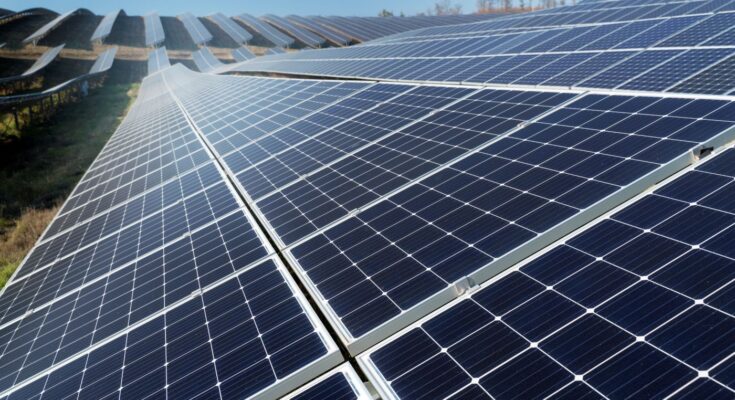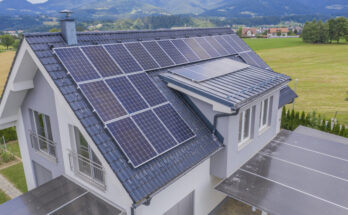Solar energy has been hailed to be one of the best sources of energy that is renewable, as solar panel systems play an important part in harnessing this plentiful energy source. As the need for solar power grows and so does the range of solar panel models offered on the market. For this post, we’ll explore the two most commonly used kinds that solar panel systems are: polycrystalline and monocrystalline. We will examine their characteristics efficiency, performance, cost and durability, as well as their environmental impact and provide information on which may be the most appropriate for your energy requirements.
1. Introduction
Solar panels, sometimes referred to as photovoltaic panels, are gadgets which convert sunlight into electrical energy. They are made up of semiconductors that absorb sunlight’s photons and produce direct current (DC) electricity. There are many kinds of solar panels that are available the monocrystalline and polycrystalline panels are popular because of their reliability and efficiency.
2. What are Solar Panels?
Before we go into the distinctions between polycrystalline and monocrystalline solar panels, it is important to be aware of the nature of solar panels and how they function. Solar panels consist of silicon-based photovoltaic cells which generate the electric field after exposure sunlight. When light beams hit the cells’ surface and knock electrons out from their atoms and create an electric current.
3. Monocrystalline Solar Panels
3.1. Definition and Structure
Solar panels that are monocrystalline made by a single crystal which makes them very efficient in converting the sunlight to electricity. They have a consistent black color with the edges are rounded, giving their appearance a clean look. The process of manufacturing involves cutting cylindrical ingots out of one silicon crystal which are then cut into thin wafers in order to make solar cells.
3.2. Advantages
- High Efficiency Solar panels made of monocrystalline are the most efficient of all kinds, usually between 15% and 20 percent. This means that they produce more power with similar amounts of sunlight as compared to polycrystalline panels.
- Effectiveness in Space: Due to their greater effectiveness, the monocrystalline panels need less space in order to generate similar amounts of power and are therefore suitable for installations that have little space.
- Extended Lifespan The monocrystalline panel has longer life spans, typically around 25-30 years, which ensures a stable and steady supply of energy.
3.3. Disadvantages
- Price: Monocrystalline panels are more expensive to make and this results in an initial cost that is higher for the end user.
- Temperature Sensitivity The panels more sensitive to temperatures above a certain point and this can impact their performance in extreme hot temperatures.
4. Polycrystalline Solar Panels
4.1. Definition and Structure
The polycrystalline panels are also referred to as multi-crystalline panels are made by combining multiple silicon crystals rather than the single crystal structure. The process of manufacturing involves melting pieces of silicon to form wafers. This gives the panels a blueish tint and an appearance that is less uniform as compared to monocrystalline panels.
4.2. Advantages
- Cost-effective: Polycrystalline panels are more affordable to manufacture which makes them a more affordable choice for those wanting at investing in solar power.
- Superior Performance in Extreme temperatures: This panel performs somewhat better when in hot environments as compared to monocrystalline panels. This makes them ideal for areas with more average temperatures.
4.3. Disadvantages
- Low Performance: Polycrystalline panels have lower efficiency, between 13% and 16 percent. This means that they need greater space to generate equivalent power that monocrystalline panels.
- Larger Dimensions: Due to their lower efficiency, polycrystalline panels need larger spaces on rooftops and other installations locations.
5. Efficiency Comparison
In terms of efficiency monocrystalline solar panels certainly beat polycrystalline panels. The superior performance of monocrystalline solar panels make them an the perfect choice for installations with a limited space or in situations where the highest power output is needed.
6. Cost Comparison
Polycrystalline panels are advantageous in terms of cost-efficiency. They are also more affordable and are a popular choice for those looking to make the switch to solar energy without having to invest in a large amount in the beginning.
7. Durability and Lifespan
Polycrystalline and monocrystalline panels are extremely durable and come with lengthy durations. Monocrystalline panels last longer, which makes them an ideal choice to invest in long-term.
8. Environmental Impact
Solar energy is renowned for its positive environmental impact and both kinds of solar panels aid in the reduction of greenhouse emissions of greenhouse gases. Monocrystalline panels, however, are slightly superior in regards to overall efficiency and less footprint on the environment.
9. Which Type of Solar Panel is Best for You?
In deciding between polycrystalline or monocrystalline panels, a variety of elements come into play. Be aware of the following elements to figure out the most suitable one to your requirements:
9.1. Factors to Consider
- Geographic location: If you live in an area that has small space and high electric costs, monocrystalline panels could be the best option due to their superior efficiency.
- Cost: If you have limited funds and plenty of space to install, polycrystalline panels could be an economical solution.
- Energy requirements: Assess your energy consumption to figure out the amount of electricity you need and then select the panels that meet your energy requirements.
10. Installation and Maintenance
10.1. Installation Process
The monocrystalline or polycrystalline panel are mounted similarly they are mounted on roofs or structures that are ground-mounted. It is important to engage an experienced installer to make sure that the panels are placed in the correct position and joined.
10.2. Maintenance Tips
Solar panels require little maintenance. Regular cleaning and inspection is vital to ensure maximum performance. Be sure to keep the panels clear of dust, debris and shading to maximize efficiency.
11. Future Trends in Solar Panel Technology
As the technology of solar energy is constantly evolving, researchers are working to improve the efficiency and effectiveness for solar panels. Innovative technologies like bifacial panels perovskite solar cell, or solar roof tiles a few of the developments that could influence the future of solar energy.
12. Conclusion
In the end Monocrystalline or polycrystalline solar panels possess their strengths and flaws. Monocrystalline panels have higher efficiency and a clean appearance and are suitable for installations that are space-constrained. However, polycrystalline panels are less expensive and can perform better in high temperature conditions.
If you are deciding between these two options, take into consideration your budget, location, and energy requirements. Whatever you choose choosing, renewable energy sources is a green option that will benefit both your pocket as well as the environment.
FAQs (Frequently Asked Questions)
- Which kind that solar panel will cost more?
- Monocrystalline solar panels are typically higher priced than polycrystalline solar panels due their greater effectiveness and efficiency in manufacturing.
- Monocrystalline panels are worth the price?
- If you are limited in space for installation and would like to increase output of energy Monocrystalline panels are worth the cost.
- Does a polycrystalline panel need more care?
- Monocrystalline as well as polycrystalline panels need minimal maintenance. Regularly cleaning is crucial to ensure maximum performance.
- Can I put in solar panels by myself?
- It is suggested to employ an experienced installer to ensure correct installation and the performance for solar panel.
- Do you know of any incentives from the government to install solar panels?
- Many countries provide incentive and tax credit to solar panels to encourage the use of renewable energy. Consult your local authority for incentives that are available.




